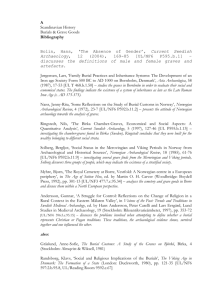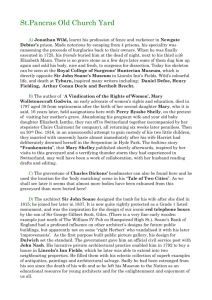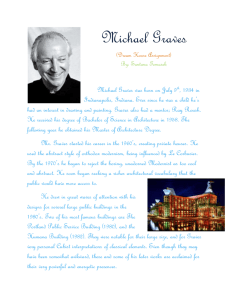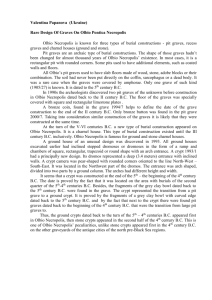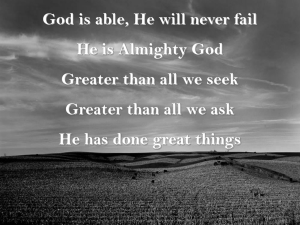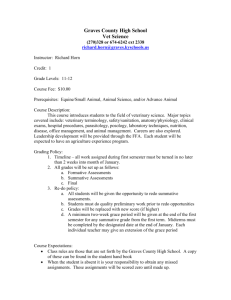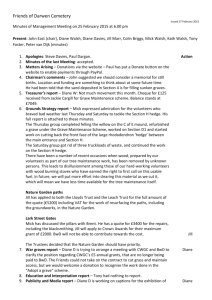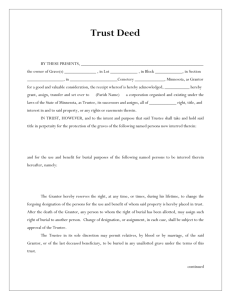Bodies and objects: parallels or overlaps in the Viking Age
advertisement
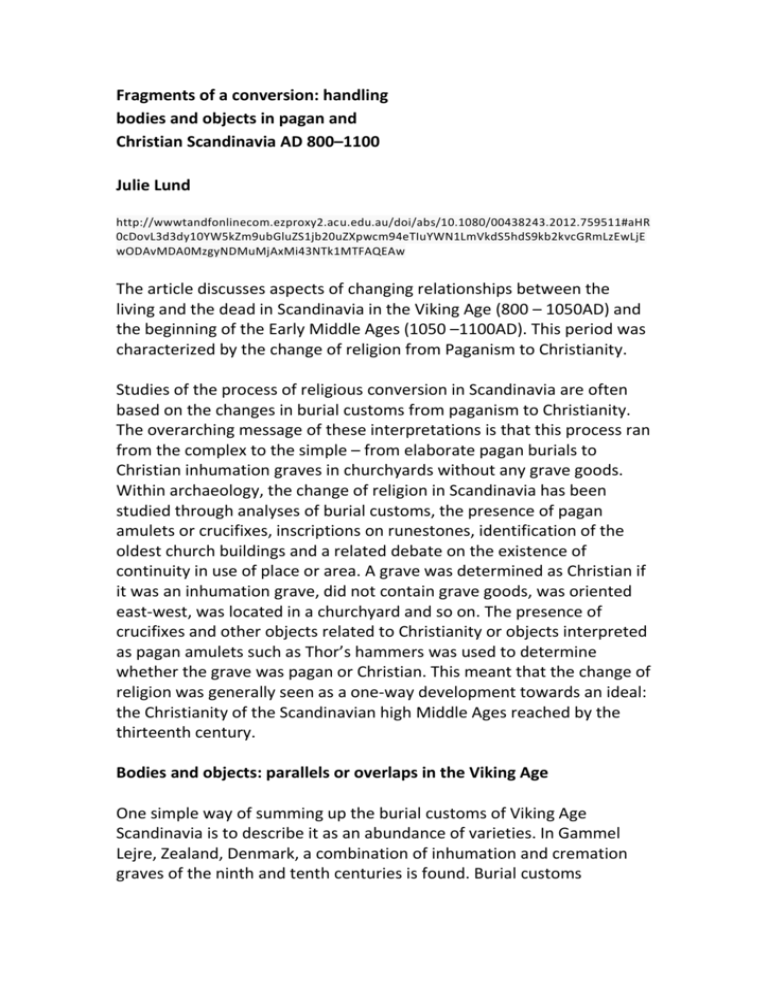
Fragments of a conversion: handling bodies and objects in pagan and Christian Scandinavia AD 800–1100 Julie Lund http://wwwtandfonlinecom.ezproxy2.acu.edu.au/doi/abs/10.1080/00438243.2012.759511#aHR 0cDovL3d3dy10YW5kZm9ubGluZS1jb20uZXpwcm94eTIuYWN1LmVkdS5hdS9kb2kvcGRmLzEwLjE wODAvMDA0MzgyNDMuMjAxMi43NTk1MTFAQEAw The article discusses aspects of changing relationships between the living and the dead in Scandinavia in the Viking Age (800 – 1050AD) and the beginning of the Early Middle Ages (1050 –1100AD). This period was characterized by the change of religion from Paganism to Christianity. Studies of the process of religious conversion in Scandinavia are often based on the changes in burial customs from paganism to Christianity. The overarching message of these interpretations is that this process ran from the complex to the simple – from elaborate pagan burials to Christian inhumation graves in churchyards without any grave goods. Within archaeology, the change of religion in Scandinavia has been studied through analyses of burial customs, the presence of pagan amulets or crucifixes, inscriptions on runestones, identification of the oldest church buildings and a related debate on the existence of continuity in use of place or area. A grave was determined as Christian if it was an inhumation grave, did not contain grave goods, was oriented east-west, was located in a churchyard and so on. The presence of crucifixes and other objects related to Christianity or objects interpreted as pagan amulets such as Thor’s hammers was used to determine whether the grave was pagan or Christian. This meant that the change of religion was generally seen as a one-way development towards an ideal: the Christianity of the Scandinavian high Middle Ages reached by the thirteenth century. Bodies and objects: parallels or overlaps in the Viking Age One simple way of summing up the burial customs of Viking Age Scandinavia is to describe it as an abundance of varieties. In Gammel Lejre, Zealand, Denmark, a combination of inhumation and cremation graves of the ninth and tenth centuries is found. Burial customs at Gammel Lejre include large ship stone settings, double graves and a grave with a decapitated body. There are inhumation graves which contain burnt human bone, one inhumation grave where the deceased had been placed in a wooden chest with a lock, graves with an abundance of grave goods in terms of precious objects and animal bones from many different species of farm animals and graves with single objects or no objects at all. Cremation graves appear in the Viking Age with many variations. One of the most dominant types are graves placed on the location of the pyre (Shetelig 1912: 179). In other cases the deceased is cremated in one place, but the bones and artefacts from the pyre are buried in another. Normally, this reburial of the material from the cremation includes parts of the charcoal and ashes of the pyre.
